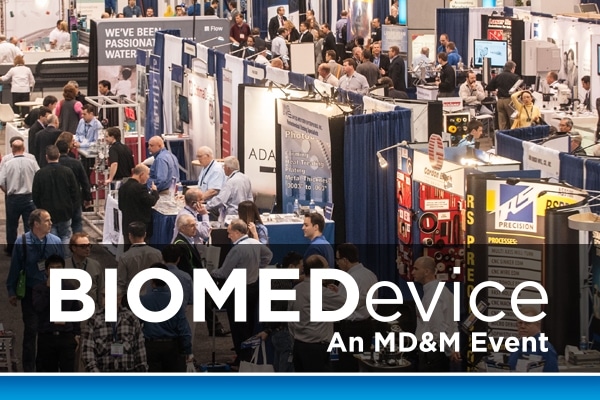With institutions like Harvard University and MIT in its backyard, the city of Boston has a storied tradition for academic and research excellence. It should come as no surprise that the New England region also possesses a thriving medical technology and manufacturing sector.
Last week, Creation Technologies was one of over 400 suppliers that attended the BIOMEDevice Boston event. For two days, engineers, innovators, and suppliers connected and collaborated on projects that will transcend the health care industry.
For medical device OEMs that attended the show, filtering through the many design firm options can be a daunting task – with cost, quality, experience, and location all considerations.
In order to identify the right fit for your design needs, here are 5 questions you should be asking a potential design partner.
1. Is your process ISO 13485:2016 Registered?
ISO 13485:2016 represents the requirements for a quality management system for the design and manufacturing of medical devices. You should not even consider any supplier that does not have a registered quality system. Many design firms may say that they have compliant processes but have not obtained ISO 13485:2016. While you may plan to execute the design project under your internal quality system, it is still important your partner has experience developing products within the controls of an ISO 13485:2016 quality system. Their estimates will be more accurate, execution will be more efficient, and your design partner maybe able to assist in the continuous improvement of your internal quality system.
2. Who owns the Intellectual Property?
Your IP should be your IP. Many medical device OEMs elect to share their intellectual property with a design firm because the upfront development costs may initially appear to be less.
There are potential risks involved in co-developing your IP with a design partner such as:
- The design partner could potentially license that IP to your competitors and charge you an ongoing royalty on your own product.
- The design partner could get acquired by another corporation, who might leverage the IP into its products, enabling the competition.
- The design partner could extend your joint IP, enabling future generation capability and leveling the playing field with your competitors.
- A lack of alignment on the long-term use of the IP can actually delay the development of the IP and the product causing undue risk of missing your market window and costing many times more than the originally perceived potential savings.
It is more beneficial in the long run to own your IP and leverage a design partner to develop and transition your product into volume manufacturing.
3. How do you Approach Unit Costing?
An experienced design partner will identify potential cost implications early in the development process. Many times, inexperienced design firms will adhere to demands to medical device OEMs without assessing the long-term implications. This could drive the unit costs up and delay the development program.
As a result, OEMs find out late in the process that they won’t meet their unit cost targets and their business assumptions were incorrect from the onset. If this is the situation, it is critical it is discovered as early as possible in the development cycle that product strategies can be reassessed and meaningful changes can be made to the project plan.
In order to control unit costs, it is also a good idea to partner with a design partner with strong manufacturing relationships so that accurate estimates of manufacturing costs are established. Many design-only companies struggle in the design to manufacturing transfer process because they don’t have the experience or the sophisticated tools required to execute seamlessly and are surprised when actual manufacturing cost information is available..
4. How Financially Flexible are you?
High upfront costs can be a huge barrier for medical device OEMs. Many design firms may demand full advanced payment of the entire program before starting the development project. This is a red flag because it indicates a lack of trust and financial controls. Additionally, a design partner shouldn’t be using your cash for their operational liquidity needs.
Design firms that are financially strained cannot be relied upon to make your product their priority. There are many projects risk that you and your design partner will need to face together, the risk of insolvency and staffing changes are not risks a design partner should bring to your product development effort.
Partnering up with an established design firm with strong financial footing may afford you better terms and credit, allowing you to be more flexible with your resources. Larger design firms also will have proper insurance and quality processes to support you in the event of a product liability claim.
5. How Far Along can you take us?
There are lots of design firms that will happily enjoy the revenue provided from developing your product for as long as they can. But to ensure program and product success, your partner’s financial motivations must be aligned with yours. If you partner is not capable of supporting your product through transition to production manufacturing and sustaining support, it will be difficult for your organizations to remain aligned. Invest your time with a design partner you can envision building a long-term relationship with. One who will be able to and motivated to serve you throughout the lifecycle of your product.
Find a company that is multi-disciplinary, that can help take your concept from napkin to manufacturing to after-market services.
And lastly, make sure you work with a company and people that you like. There will be times of conflict and challenging situations, so you will want to be with a design partner that will support you and understand your needs.


